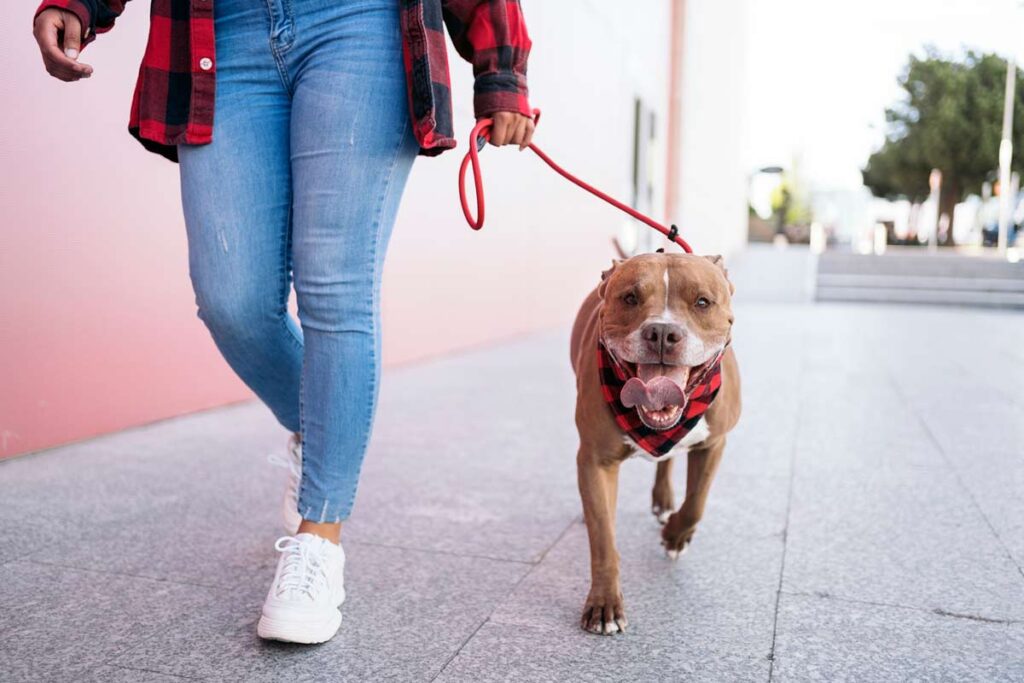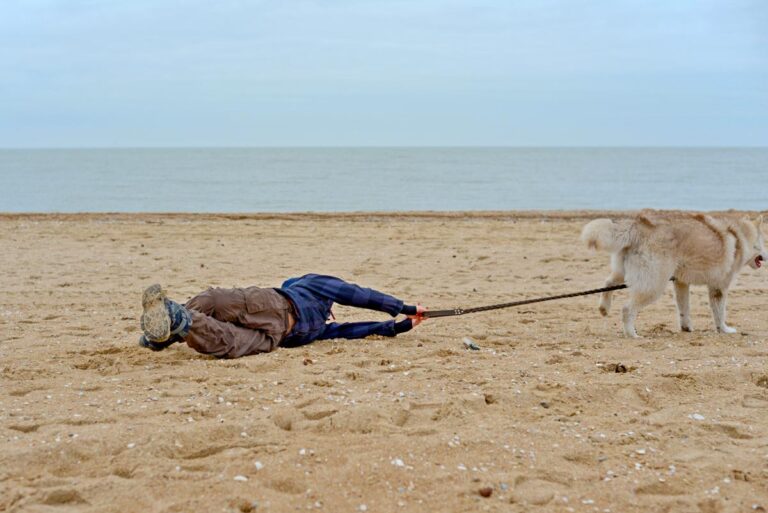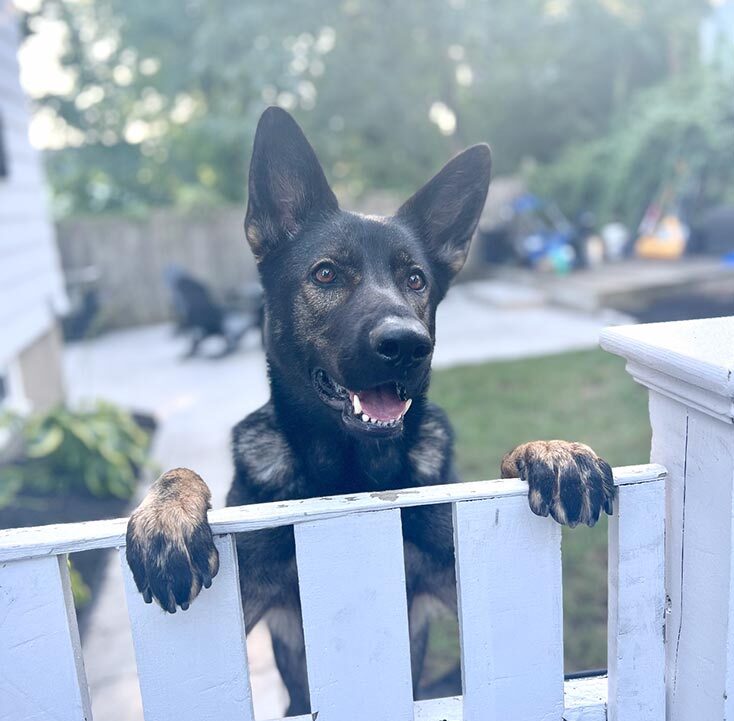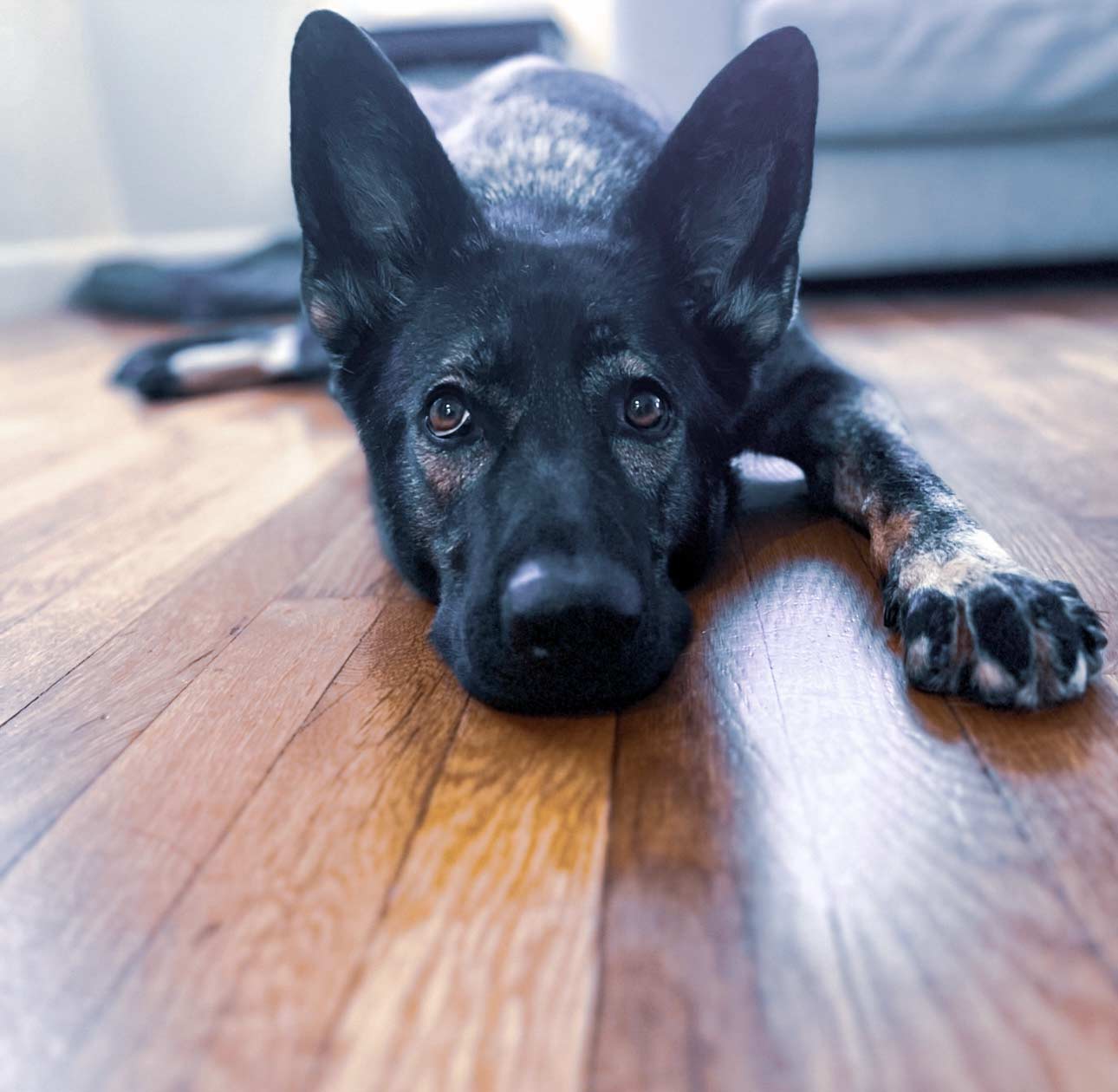In the vast world of dog welfare and canine training, few tools have sparked as much debate and misunderstanding when it comes to dog ownership as the prong collar.
Due to its intimidating appearance and widespread misconceptions, the prong collar receives a fair amount of critisism. Yet for every negative claim, there are dog owners and trainers who swear by the effectiveness and safety of these training collars.
So, what’s the real story? Are prong collars cruel? Are they good for dogs?
In this article, we unravel the myths surrounding the prong collar. We offer a balanced view backed by research and expertise while explaining all the benefits this tool offers dog owners.
What are the benefits of a prong collar?

When used responsibly, the prong collar is an essential training tool that can help effectively and humanely modify your dog’s behavior. Dogs can’t speak English and we can’t speak Dog, so we need to rely on tools to help us communicate with our dogs when we are training them.
When you give your dog a treat, they know they did something right. By the same token, when you use a training collar for a correction, you are signaling to your dog that they aren’t doing what you are asking of them.
Your dog wants to please you. Just a slight amount of pressure from the collar will communicate to your dog that they need to adjust their behavior. Think of the prong collar as power steering for your dog.
How does a prong collar work?
The prong collar consists of metal prong links that are evenly arranged around the collar. The open ends of the metal links lay flat on the dog’s throat, applying pressure evenly throughout the collar, regardless of how your dog moves or twists its neck.
Contrary to popular myths, the prongs are professionally rounded and do not puncture or stab your dog’s throat. The sensation the prong collar gives is meant to mimic the corrective nip of a mother dog to her puppies.
High-quality prong collars like the Herm Sprenger, are made with a distributor plate that evenly distributes all the pressure of the links going both ways.
When pressure is applied either by the dog pulling or the handler giving a correction, the prong collar is tightened, and the prongs press into the dog’s throat.
There are two rings on the prong collar that the leash attaches to. The “live ring” is the one that tightens when the dog pulls or you give a correction. This is what provides the pinching sensation around your dog’s throat.

The “dead ring” is a larger, stationary ring on the collar. When the leash is attached to the dead ring, the prong collar doesn’t tighten in the same way. Instead, it functions more like a regular collar for the dog. Although there still might be a slight pinch around your dog’s throat from the prongs if the dog pulls, the effect is reduced.
Some dog trainers or owners use the dead ring on the prong collar until the dog becomes accustomed to wearing the prong collar. Once the dog is used to the general feeling of the prong collar, they switch to the live ring during training.
If your dog has only ever used a standard flat collar, they might need some time to get used to the feeling of the prong collar.
You can use the dead ring in any situation where your dog doesn’t require corrections. This makes a clear distinction to the dog between training time and fun time. It also ensures the prong collar doesn’t cause accidental corrections.
Are prong collars harmful to dogs?
There is a lot of widespread misinformation about prong collars due to their appearance and criticism from animal rights groups and “positive only” dog trainers.
The prong collar is actually one of the safest training collars compared to flat collars or choke chains. The way the prong collar works actually protects your dog’s trachea and neck.
According to veterinary chiropractor Dr. Daniel Kamen, flat collars are the number one cause of neck injuries in dogs. In his book The Well Adjusted Dog, Dr. Kamen writes that “a frustrated dog owner who has difficulty controlling his pet will pull the dog in such a manner as to cause tremendous cervical muscle tightening, producing subluxations.”

He goes on to write that because the prong collar, “…requires only a small amount of force” injuries and “incidence of canine upper cervical subluxations is far less with the prong collar.”
The prong collar allows dog handlers to apply subtle, but firm pressure, rather than yanking or pulling on the dog’s neck to modify their behavior. Long story short, if your dog is constantly pulling you on their leash, a flat collar can hurt their neck while a prong collar can protect it.
Any dog training tool can hurt your dog if it’s used incorrectly. The key to successful dog training with prong collars is to understand the tool and use it correctly. You can watch one of our favorite dog trainers, Tom Davis, teach dog owners the correct way to use prong collars here.
When should I use a prong collar?
Prong collars should only be worn during training sessions or on walks with your dog. They are NOT meant to be used as a flat collar replacement. Prong collar injuries occur when they are used incorrectly or left on the dog for too long.
Do vets recommend prong collars?

Technically there is no official professional stance when it comes to veterinarians regarding prong collars. When it comes to dog chiropractors, however, the prong collar is usually the tool of choice to stop pulling and work on behavior modification.
Our dog wears her prong collar every time we take a trip to the vet. She pulls, especially when she is excited and this ensures that we can control her in an uncomfortable environment (she does not like the shots) with unknown variables, mainly other dogs.
I think you will find that the number one priority of most veterinarians is the safety and well-being of your dog. As long as you are being safe and effective, your vet will probably support whatever training collar you use.
Does My Dog Need A Prong Collar?

Prong collars can can be a great training tool for dog owners, regardless of the breed or size of your dog. Both large dogs and small dogs can benefit from this training collar. It’s one of the safest collars to help you provide corrections and well-balanced training for your dog.
Prong collars can be especially beneficial for anyone struggling to physically control their dog on walks. You should consider getting a prong collar for your dog if you:
· Are unable to control your dog physically, regardless of breed or size.
· Have a reactive dog who needs redirection from their triggers.
· Are smaller or petite and have a large or strong dog.
· Have a dog who pulls excessively on walks and drags you along.
Prong Collars Versus Choke Collars

While prong collars consist of interlocking metal links, choke collars are usually made of a metal chain or nylon. Choke collars have a loop that tightens around the dog’s neck when the dog pulls or when the handler pulls on the leash.
Because there is no limit to how tight the choke collar can get, it can restrict the dog’s airway if the dog pulls too much or if the handler pulls too hard. Choke collars have a high risk of causing tracheal damage or strangulation.
Why The Herm Sprenger Collar Is Best
Herm Sprenger is often recognized as the gold standard when it comes to training tools for dogs. Known for their high-quality dog products and expert craftsmanship, Herm Sprenger is widely used by professional dog trainers and law enforcement K9 handlers.
Fun fact, they are also a trusted manufacturer of equine training tools.
Herm Sprenger is passionate about using high-quality materials to make the best training tools for dogs. Their collars are made using high-grade stainless steel for lasting durability and rust resistance.
The collars are precisely designed with rounded prongs that distribute all the pressure evenly around the dog’s neck. You can easily add or remove links to adjust the prong collar to your dog’s neck size. This attention to detail minimizes the risk of injury and ensures that the corrections to your dog are controlled and consistent.
Herm Sprenger Prong Collar Price
The prices of a Herm Sprenger collar can vary based on size, specific models, and place of purchase. Prices tend to range from $20 to $50. Keep in mind that prices can change over time and might vary based on regions or retailer markups.
Where To Buy A Herm Sprenger Prong Collar

The most important thing when purchasing your Herm Sprenger collar is to make sure you are buying from a legitimate retailer or reputable pet supply store. Due to the popularity and reputation of Herm Sprenger, there are often counterfeit collars claiming to be Herm Sprenger collars.
These collars are not manufactured with the same high-quality standards as Herm Sprenger collars. Knowing you purchased a genuine Herm Sprenger provides you with peace of mind that you are using a tool designed with the welfare of your dog in mind.
To ensure your dog’s wellbeing, it’s crucial to make sure you are purchasing an authentic Herm Sprenger collar.
How To Tell If A Herm Sprenger Prong Collar Is Real
Given Herm Sprenger’s reputation for their superior craftmanship, it’s not uncommon to find counterfeit or imitation Herm Sprenger collars. Here are some ways to verify the authenticity of your Herm Sprenger collar:
- Stamp or Logo: Authentic Herm Sprenger collars have the stamp “HS” or “HS-Germany.”
- Country of Origin: Herm Sprenger collars are manufactured in Germany. So if your collar says “made in China” you know you bought a fake.
- Pricing: Unusually low prices or companies advertising crazy sales are usually an indicator that the collar is not a real Herm Sprenger.
- Quality of Materials: Herm Sprenger uses high-quality stainless steel. The metal on your collar should be solid, not flimsy, or cheap. The welding points and tips should be smooth and welded, not unfinished or sharp.
- Prong Placement and Consistency: The prongs on a genuine Herm Sprenger collar should be uniformly sized and spaced with a rounded finish. The prongs should all face inward and the flat sides should be facing outward, away from the dog. A fake collar might have prongs all facing the same way.
- No distributor plate or dead ring: Prong collars missing a distributor plate, or a dead ring are a definite sign that you purchased a fake.
- Packaging: Authentic Herm Sprenger prong collars come in branded packaging and usually include information about the product.
Herm Sprenger Prong Collar Sizing, Fit, and Placement
Making sure your Herm Sprenger collar is the correct size and fit for your dog is necessary to ensure its effectiveness and safety.
Herm Sprenger collars come in a variety of diameters. Larger breeds or more muscular dogs might require a thicker prong diameter. Measure the length around your dog’s neck to give you a starting point. You can always adjust the length of the collar by adding or removing prong links.
The collar should sit high on the dog’s neck, positioned right behind the ears and under the jaw. It should be snug enough to stay in this position, but not so tight that you can’t fit a finger between the collar and your dog. It should never be loose or able to slide down the neck or be pulled over your dog’s head.
Click here for a link to Herm Sprenger’s sizing guide.
How To Put On A Prong Collar
To unlink and open the collar, pinch two prongs from a single link together. This allows the link you are pinching to come apart from its neighboring link.
Place the collar around your dog’s neck, remembering to position it on the neck, behind the ears and below the jaw.
Relink the collar by pinching the prongs of the open link and inserting them back into the holes of the neighboring link.
From here, attach the leash to the dead ring or live ring of the Herm Sprenger prong collar. If your dog is new to a prong collar, it might be a good idea to use the dead ring for a while, until your dog gets used to the feeling.
Prong Collar Training and How To Make Corrections
Once you have properly put collar on your dog, you can make a correction using a quick and gentle “pop” of the leash, followed by an immediate release. Never drag your dog or pull continuously on the collar to provide a correction.
The pop should be swift, not sustained. The way the collar is designed causes the prongs to create a pinching sensation. It only takes a small movement of the leash for your dog to feel the correction.
Prong Collar Training: Important Things To Know

Make sure you are making corrections the instant your dog exhibits the undesired behavior. This ensures that the dog learns to associates the correction with that specific behavior. Delayed corrections can confuse the dog, which can lead to anxiety or fear.
Consistency is crucial to modifying any type of behavior. If you are only correcting a particular behavior sometimes and allowing it at other times, the dog can get confused, and training can become more challenging.
While the degree of sensitivity to the prong collar varies between dogs, it’s important to never be overly harsh when using the collar for corrections. The goal of using this training tool is to get the dog’s attention and redirect them to change their behavior, never to cause pain or fear.
Reasons Your Prong Collar Might Not Be Working

One of the most common reasons a prong collar might not be working is that it does not fit properly. The collar needs to sit high on the dog’s neck. It should be behind the ears and below the jaw. A collar that is too loose won’t provide the intended correction and a collar that is too tight could be causing discomfort.
Another reason your training collar might not effective could be incorrect use. Corrections with the prong collar should be made using a quick and gentle pop, followed by immediate release. Dog handlers who are pulling the leash or holding tension without implementing the popping motion, might not be communicating effectively with the dog.
Another common reason that the collar might not be working is quality. A fake or counterfeit prong collar can be made from cheap materials and the low-quality design might not provide consistent or effective corrections.
Prong Collars: Maintaining Balanced Dog Training With Positive Reinforcement
Balance is the key to your dog’s well-being and training success. Pairing prong collar training with positive feedback for your dog will increase the effectiveness of your behavior modification and strengthen your bond with your dog.

It is important that in addition to making corrections with the collar, you also reinforce desired behaviors with rewards and positive training. Whether these rewards are praise, treats, or play, your dog needs to know that you are happy with their behavior when they do the right thing.
We have a prong collar to work on our dog’s pulling while she is on a leash. We like to bring small treats in our pocket during walks so that we can quickly reward our dog for her good behavior, while at the same time using the collar to achieve that behavior.
Our experience with the prong collar...
When we first entered the world of dog training with our German Shepard, we were hesitant to try a prong collar. We started working with a professional trainer who specializes in training police dogs, on obedience training when she was 3 months old. At 6 months, we reached out for advice because she refused to stop pulling on walks. At 70 pounds, she was dragging us down the street on her flat dog collar.
Our dog trainer immediately recommended the prong collar. Despite watching many dog training videos, we were still unsure if it was a good idea. The next training session with our dog trainer quickly changed our minds.
After telling us how the prong collar worked, he explained how flat dog collars can actually cause more harm to dogs. He then fastened one of his prong collars around his thigh to demonstrate that it does not cause the dog pain when used correctly.
We each took a turn using the collar on our thighs and learning the mechanics of the tool. We purchased a prong collar that night and it has become an invaluable tool to help our dog to stop pulling.
Conclusion

There is a lot of negative association and misunderstanding surrounding the prong collar and dog training. While much of this controversy is rooted in genuine concern for canine wellbeing, it is necessary to understand the benefits this tool can provide dog owners working on behavior modification.
Herm Sprenger collars, with their exceptional quality and product design, are a prime example of how this great training tool, when used correctly, can be both effective and humane. There is a reason that professional dog trainers and K-9 handlers rely on the Herm Sprenger training collar.
It is crucial to approach prong collar training with education and understanding so that you can ensure the safety and well-being of your dog. By making sure you have the proper fit, technique, and a high-quality collar like the Herm Sprenger, you can harness all the benefits of the prong collar without jeopardizing your dog’s safety.
When used with knowledge and care, the prong collar can be an invaluable tool for training dogs. Now that you have all the facts, you can start using the prong collar to establish effective training and communication with your dog.




